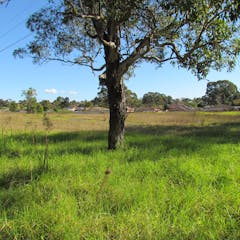
Articles sur Public transport
Affichage de 181 à 200 de 285 articles

Smart city thinking makes good use of rapidly developing technology to help make cities work better, easier-to-navigate, safer, healthier and more enjoyable places to live.

While many talk about 30-minute cities, some aim for residents to be able to get to most services within 20 minutes. But cities like Melbourne have an awful lot of work to do to achieve their goal.

Many Americans live in transit deserts – areas where demand for transit exceeds the supply. To fix these gaps, we need to find and map them so agencies can add transit options in the right places.

Most women feel unsafe when using public transport. Instead of gender segregation, researchers suggest gender-sensitive design could be a better way to ensure safety for all.

The rail project may well help get more commuters into the CBD, but offers few benefits for the parts of the broader metro area where most population growth is occurring.

New research shows many good intentions for creating urban environments that promote good health were not carried through. The solutions start with engaging more closely with residents themselves.

Estimated cost savings for rail and bus franchising from Infrastructure Australia and PwC will have government treasurers salivating. Problem is, the figures are almost certainly far too high.

The light rail project pushed up property values within 800 metres of the stations by over 30% from 1996 to 2016. Gains on this scale offer a potential source of finance for public transport.

There’s every chance that, if mismanaged, driverless vehicle technologies will entrench the ills of car dependency.

A new study shows that restaurateurs would be better off advocating for better public transport access to their precincts rather than for more parking.

Policy changes such as the ‘lockout laws’ have had profound impacts on inner Sydney nightlife. Transport data help us see whether these have caused problems to spill over into neighbouring areas.

The St Petersburg attack shows how engineering and psychology can help optimise how people are evacuated in a disaster.

A project set up north of Melbourne’s CBD aims to create a living laboratory for developing a highly integrated, smart, multimodal transport system.

Labor's edge over the government in the polls has seen the party stay united. But it has not stopped speculation about whether frontbencher Anthony Albanese would be a better leader of the party.

Perth’s Roe 8 project illustrates all that is wrong with how we are planning and managing infrastructure in our cities.

A combination of transit-oriented centres, inclusionary zoning and a special rate on land instead of stamp duty could make housing more affordable by cutting congestion, development and travel costs.

Australia needs stronger policy aimed at curbing air pollution, but the options currently on the table fall short. For now, we could all aim to drive less and turn off the engine when the car is idle.

Roads versus public transport: for decades, these have been the battle lines in debates over transport in our cities. But a revolution in mobility is under way that will transform our thinking.

One year on, the Turnbull government is touting the economic benefits of an infrastructure agenda that neglects the other important functions of transport projects.

Travelling to work can require as much water as you use at home.
